

If you are one of the Generation Y’s like me, then your parents or grandparents might have told you how they used the Internet, or the “Web” during their days. They used it for sending text messages, e-mails, downloading mp3s, and occasional streaming of videos. Now, the global spread of user-generated content and apps is a prevalent narrative around the modern Internet. Individuals and organizations may share material and web experiences with a large audience because of the advent of social media, online publishing platforms, and other technologies. This is the movement dubbed “Web 2.0.”
However, this open, democratic approach, does not apply to every facet of the Internet. When it comes to web application hosting, the contrary is true. It is because a person or organization looking to develop a new application now has few viable options for where it will be hosted and operated. All thanks to blockchain, we are seeing a slow but steady shift toward a more decentralised Internet- the “Web 3.0”.
In this blog, we will discuss the very concepts of Web 3.0 and Blockchain technology and how the former is impacted by the latter. It’s gonna be an informational read..Hope you don’t get bored.
Defining Blockchain technology
Blockchain technology is an innovative way to implement decentralization with exciting potential for security, privacy, and dependability. It is a method that allows anyone to retain records without requiring a central authority. A decentralised method of Upcoming NFT Launches keeping a non-falsifiable ledger.Decentralization decreases the possibility of deceit, forgery, and manipulation. There are a total of four things that combine to form blockchain technology.
The first item needed to facilitate a blockchain is a peer-to-peer network – a network of privileged computers, also known as nodes. It’s open to anyone and everyone. This is already available, thanks to the Internet. We require this network in order to communicate and share information with one another.
Cryptography is the second component. Cryptography is the technique of encrypted communication in a hostile environment.
The third element is a consensus algorithm. You can use the word “rule” instead of the technical term “algorithm.” This implies we will need to come to an agreement on how to add a new page, also known as a block, to our database. There are many different types of consensus rules. In Bitcoin, for example, we employ a Proof of Work consensus algorithm. According to this algorithm, in order to win the privilege to add a new page to a ledger, a person must solve a problem. Solving such problems demands massive computational ability. There are alternative consensus algorithms that do not require as much energy, and the algorithm depends on the type of blockchain.
Last but not least, we have punishment and reward. This factor takes from game theory, and it ensures that people will always obey the rules in their best interests.
All these elements combined form Blockchain technology.
What is Web 3.0?
Web 3.0 is predicted to be closer to Sir Tim Berners-Lee’s initial idea of a dispersed network with no central authorities or point of failure. It depicts the next wave of technological upheaval brought on by the Internet. Limitless reach, decentralisation, artificial intelligence, augmented/virtual reality, and user experience are its key concepts.
According to the Web 3.0 philosophy, no user should be held accountable for his or her internet usage. There should be no central control or monitoring. If you wish to surf particular sites or access certain web pages, you do not need anyone’s permission or get their confidence. You may now not only live in the physical world, but also in the digital world, where you can engage with millions of people. Transactions will be entirely decentralised and faster. Access to information would be user-driven, and you would be able to enjoy a whole new level of omnipresent connectivity.
Examples of Web 3.0
The Metaverse (Sandbox, Decentraland, Roblox)
Cryptocurrencies
Blockchain technology
Bankless transactions
AI Integrations
Open world VR Games, etc.
Role of blockchain in web 3.0
The birth of Bitcoin
Blockchain, in particular, is seen to be one of the most important technologies for Web 3.0’s architecture. With the launch of Bitcoin in 2009, blockchain was born. Satoshi Nakamoto, an unnamed individual or group, designed Bitcoin to decentralise the global financial industry in response to the 2008 financial crisis. As Forbes defines it, “Blockchain is the groundbreaking database technology that lies at the heart of all cryptocurrencies”. Blockchain makes it harder to attack or defraud the system by distributing duplicates of the database over the entire network. While bitcoin is now the most well-known use of blockchain, the technology offers the ability to be used for a variety of purposes. Although Bitcoin was the first blockchain, it is one of several blockchains that have the potential to disrupt every sector and business.
The Ethereum Network
After Bitcoin, Ethereum is the most well-known blockchain, and it is the one most likely to promote Web 3.0. The Ethereum blockchain is now widely regarded as the perfect open and trustless technology. It now serves as the backbone of a decentralised Internet. With blockchain and the InterPlanetary File System (IPFS) fueling the emergence of Web 3.0, the world might see a new, intelligent Internet. This will result in a more powerful and personalised online experience, revolutionising the interconnectedness of the Internet, apps, and the physical world. Because of the decentralisation of data and privacy-preserving computational approaches, there will be significant advancements in privacy and security.
The future…
Latency, scalability, and reliability are still obstacles in the transition to Web 3.0. The network effect will continue to enhance the benefits of Web 3.0 as adoption grows, resulting in even more adoption.
Interacting with Ethereum and similar blockchain networks is currently challenging. It requires running complicated software, which includes downloading and validating enormous quantities of data, creating technological obstacles and excluding users using low-power devices. Blockchain will continue to assist in lowering the accessibility hurdles for people who wish to join as Web 3.0 becomes more widely used.